What really happened on November 9, 1938 in Munich
The actual March 9, 1938 reinactment of the 1923 original National Socialist march to the Feldherrnhalle in Munich, the day that ended with the fateful "Night of the broken glass." Adolf Hitler is center front, with Goering on his right. (Getty images)
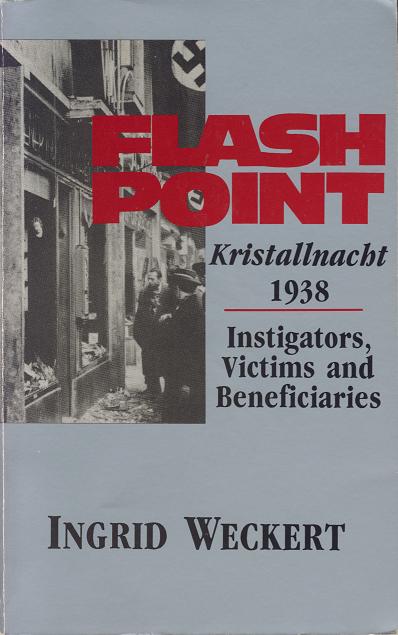 FLASHPOINT Kristallnacht 1938: Instigators, Victims and Beneficiaries by Ingrid Weckert
FLASHPOINT Kristallnacht 1938: Instigators, Victims and Beneficiaries by Ingrid Weckert
Translated by Mr. Carl Hottelet from the original German
English translation Copyright 1991 by Institute for Historical Review in arrangement with Grabert Verlag, Tübingen, Germany
By Carolyn Yeager
Part Four
WE COME NOW TO THE NUTS AND BOLTS of the Kristallnacht narrative as it has come down to us courtesy of the mainstream media and our bought-and-sold-out historians. Taken from chapter 7, titled November 9, 1938.
Ingrid Weckert reminds us that in the Third Reich, November 9th was a special day. It was memorialized as the day in 1923 when 2000 members of the fledgling National Socialist movement marched on the Feldherrnhalle in the Munich city center, with a coup d'etat in mind, and l6 were killed by a police cordon. These sixteen became martyrs of the NSDAP. Once in power, the party would re-enact the march through the Munich streets on each Nov. 9, ending at the tombs of the martyrs, followed by an evening dinner attended by all the gauleiters (party leaders) and Hitler himself. On this day in 1938, a young Legation Secretary in Paris named Ernst vom Rath died in hospital after being shot point-blank two days earlier by a 17-year old dissafected Polish Jew.
The “Narrative” is that as word got around that evening that Vom Rath had died, the “Nazis,” instructed by Minister of Propaganda and Berlin Gauleiter Joseph Goebbels, organized attacks against Jews (their homes, synagogues and shops) all around Germany.
Weckert has investigated all sources of information concerning this event for her book, Flashpoint. She seems to leave nothing out, but weighs the credibility of the sources. What she finds is a confusing variety of “facts” and recollections, most unconfirmed and unconfirmable, that adds up to there being no reliable account explaining the why and wherefore of this entire night of violence.
This, in itself, supports the idea of a hoax. It is unmistakably reminiscent of the “Holocaust facts” and recollections that are accepted unquestioningly by historians, media, and complicit governments, as proof of the narrative. West German court findings after 1945, as part of the prosecution of “National Socialist crimes,” recount that:
Strangers surfaced singly in small towns and villages. They approached Party and SA leaders to press them to act against the Jews. The mayor and party leader in Schupbach (near Limberg) told his police sergeant-major, “Somebody appeared and raised a row because no action had yet been taken against the Jews in Schupbach.” Who that “somebody” was could not be ascertained.
In Marburg two members of the SD (Sicherheitsdienst—Security Service) from Kassel appeared in SS uniform before the commander of the SA regiment “Jaeger II” and ordered him to destroy the Marburg Synagogue. The regimental commander told him he did not take orders from the SD.” (Friedrich Grimm, Mit Offinem Visier, (Leoni: 1961) p. 145.) (p. 40)
This type of scene occurred more and more frequently throughout Germany as evening fell. Strangers appeared out of nowwhere, without identification, demanding that action be taken against the Jews. When rebuffed, they silently vanished. In other instances, the foreign provocatuers started pograms by themselves. In Muenzenburg, for example, the drivers of two out-of-town government cars, one from Darmstadt, the other from Friedberg, used antisemitic speeches to unleash an assault on the synagogue. (Grimm, p. 21) The main body of provocateurs took up its position in the nighttime hours.
Gathering of the Old Guard
The party leaders in Munich were having dinner with the Fuehrer. As they ate, reports came in, one being that vom Rath had died. After that news, Hitler and Minister Goebbels were speaking quietly to each other for awhile, so quietly that no one overheard anything. Toward 9 p.m. Hitler left for his private apartment in Munich.
A short time later, Goebbels rose and spoke to his fellow gaulieters, but what he said is somehow lost to history. Instead of an official record, we have a number of highly contradictory accounts 'from memory' and rumour. Because Dr. Goebbels was a passionate speaker, he probably did first vent his anger at the death of a German diplomat at the whim of an under-age Jewish alien. However, at the end of  his talk he warned the assembled leaders not to allow, under any circumstances, party members and SA members to take part in any anti-Jewish demonstrations and to prevent them at all costs. This is agreed by everyone. All Gauleiters immediately got to a phone and relayed this information to their gaus (Party regions) and their subordinates. SA Chief of Staff Victor Lutze (pictured left) passed it on to the SA formations.
his talk he warned the assembled leaders not to allow, under any circumstances, party members and SA members to take part in any anti-Jewish demonstrations and to prevent them at all costs. This is agreed by everyone. All Gauleiters immediately got to a phone and relayed this information to their gaus (Party regions) and their subordinates. SA Chief of Staff Victor Lutze (pictured left) passed it on to the SA formations.
One source that blames Dr. Goebbels for ordering the “pogram” is the only official government-produced report on"Kristallnacht": Der 9 November, 1938: Reichskristallnacht (Bonn, 1958) by Hermann Graml. Graml was a historian employed by the Munich Institute for Contempory History who specialized in books about the resistance to the National Socialists & Hitler.
How does Dr. Graml get around the general agreement that Dr. Goebbels did NOT suggest or approve of any violence against the Jews? “He concedes the point, but then says—and here the psycho-historian comes out—he really didn't mean it!” (p. 44) We hear this whenever the Jewish narrative becomes impossible to justify or is not supported by the evidence—it's simply decided that common words have a different meaning among the “nazi plotters” and we're told what nefarious meaning the words were given.
What was Reinhard Heydrich's role?
Just as there are varying accounts of National Socialist actions connected to every “crime” committed under their leadership, so contemporary history offers us a number of different accounts, or recollections, of how Chief of Security Police Reinhard Heydrich spent the evening and night of November 9-10, 1938.
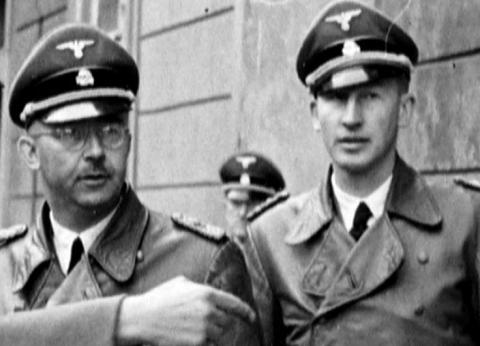
Reichsfuehrer SS Heinrich Himmler, left, with Reinhard Heydrich, chief of the security police, who were both in Munich that night and released orders to the SS and Federal Police contingents respectively to reject any involvement in the disturbances, but to protect Jewish lives and property.
Weckert gives us accounts from Gauleiter Rudolf Jordan; SS official Luitpold Schallermeier; Minister of the Interior Dr. Werner Best; biographer Guenther Deschner; “final solution” specialist Gerald Reitlinger; and Heydrich's wife Lina. All different. Heydrich was in Berlin, in Nuremberg, and in Munich, all at the same time. Weckert concludes the only credible statements come from Dr. Best and Rudolf Jordan.
Heydrich attended the dinner at the Munich Town Hall and after that went to his hotel—the “Vier Jahreszeiten” (Four Seasons). At midnight, he took part in the oath-taking ceremony for recruits to the SS-Special Duty troops at the Feldherrnhalle. After the swearing in, the Fuehrer spoke. Following that, Heydrich and Dr. Best were together in the hotel when he noticed the nearby synagogue was burning and hastened to Himmler, also staying in the same hotel.
At Himmler's order, Heydrich, at 1:20 a.m. (Nov. 10), telexed instructions to all police officers to maintain calm and order throughout the country, and to protect Jewish property. Insofar as that might be necessary to protect the persons of Jews, they were to be taken into protective custody. Whatever anti-Jewish actions might still be occurring were to be put down at once. The SS now, too—as had the Party and the Brownshirts from the Gauleiters previously—received instructions to avoid participation in the disturbances under all circumstances. (p. 49)
From page 49 to 53, Weckert gives examples to show how post-war historians' methods and standards for 'historical truth' have changed for the worse in Germany. I am not going to cover this except for one example which can suffice for all.
What are we to do with the witnesses who are ready to swear that clear, unambiguous orders were, in fact, issued, orders that prohibited anti-Jewish acts? Yes, says [Dr. Hermann] Graml, there may indeed be such people, and they have also sworn to that in court—but it is unbelievable.
SA Chief of Staff Lutze:
The leader of the SA detachment in Kurpfalz...declared that Lutze directly forbade SA men to take part...and instructed the Group Leaders to issue commands to that end.
This statement was made in court under oath. Graml: “It is out of the question!” “The witness perjured himself.” As an SA leader, that was only natural. (my italics -cy)
Lamentably, Graml is not an exception among our present-day “historians.” (p. 52)
Chapter 8: Schallermeier's “Sworn Statement”
A sworn statement by SS Officer Luitpold Schallermeier was submitted at the Nuremberg Tribunal by SS defense attorney, Dr. Pelkmann. The full text comprising three pages is curiously contracted in the hands of Kristallnacht expert Graml. But the content is entirely clear: the police and SS are to stay out of the anti-Jewish tumult, and to protect the Jews and their property.
Schallermeier also tells of a memorandum-for-file that Himmler dictated to him. In it, Himmler “surmises that Goebbels started the actions.” Five sentences in all do not fit with the content of the whole document. They state:
...that the Munich-Upper Bavaria regional propaganda office has issued an order in regard to the outbreak of so-called Jewish pogroms with which the state police was not permitted to interfere, and, further ...”The state police are to be guided by the wishes of the propaganda offices” and “the regional propaganda offices are to set the guidelines for this action.” (p. 55)
According to this, Himmler was in full accord with that disposition, and ordered the police to be guided by the wishes of the propaganda offices. Clearly and simply, says Weckert, that is nonsense. In the first place, no propaganda officer had any authority over any police formation; it is laughable that Himmler would have countananced such intrusion into his sphere of competence.
Secondly, the text as written states that the police are to carry out “Jewish pogroms” by “preventing plundering and providing protection for Jewish persons and security for Jewish property.” Pure idiocy, says Weckert. Himmler also derided the “hollow-headedness” of Joseph Goebbels, whom he at the same time supported.
Weckert reminds us that the insertions could have been present either before or not till after Schallermeier signed it. That will astonish no one who knows how “sworn depositions” came to be made at Nuremberg, and of the danger to life and limb of anyone so rash as to testify for the defense, or to depose for it. For example, “SS-General Karl Wolff, who wanted to testify on behalf of Ernst Kaltenbrunner, quickly landed in an insane asylum.” (p.57)
Kaltenbrunner, an Austrian who replaced Reinhard Heydrich as SS Chief of Security Police, was one of the “major war criminals” who was illegally hanged on Oct. 16, 1946.
In the case of Schallermeier's sworn statement, the principal aim of the defense counsel Dr., Pelkmann was the honor of the SS; his sole objective was to prove that the German police and the SS were not involved in the Kristallnacht disturbances. Goebbels was dead; he could no longer be hurt by what was said about him. It is time now, however, for us to give thought to historical truth—so often disregarded or discarded in the maneuverings of the trials, writes Weckert.
Graml mentions Schallermeier repeatedly, but he doesn't let his readers know what Schallermeier really said. “From the deposition's three pages, he quotes just three sentences—precisely those … rendered nonsensical by insertions that distorted them. [...] Graml's sole aim—and he says so expressly—is to incriminate Goebbels.”
Next, we will assess the damage.
Category
Germany, Jews, Kristallnacht- 1476 reads

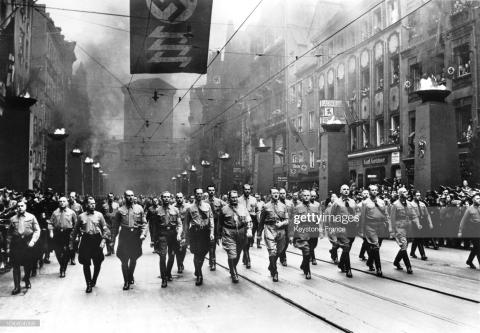





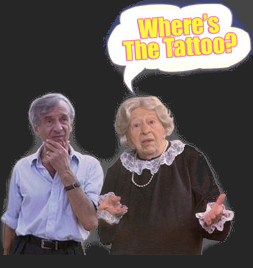
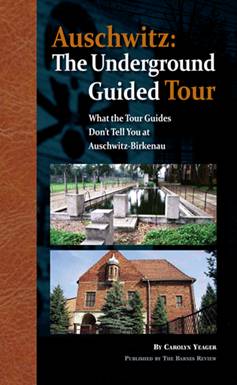

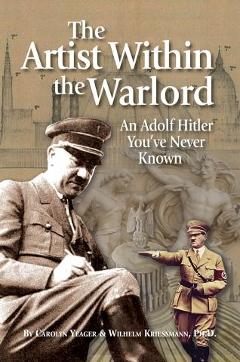
Comments
Lies and dirt (lots of it!)
Everywhere one digs into (((this))) tribe's history, is certain to unearth nothing of value for the human race. All they have contributed for millennia is lies, duplicity and dirt; a lot of dirt. This filthy race ought to be removed by the face of the Earth, hopefully by divine intervention, of course!
Thanks
Thanks for reading the article. Those who don't read it, won't know.
I Believe all this to be True.
Long Live National Socialism!
logic
Simple logic of cause and effect about the "Night of Broken Glass" fits with the known crimes by jewry throughout history:
The jews planned the one-two punch.
1- Assassinate a valuable German of our White race.
2- Distract any sympathy the Germans might get from the assassination by staging a "pogrom" against their self-chosen selves (actually, just buildings) and blame it on Germans, of course. Use the international jewsmedia to invent an international uproar versus Germans and in favor of the "poor, innocent" jews.
If the Germans had done the various big things the lying scum jews have accused them of, We Would Celebrate Those Things, and there would be a lot less of the enemy race inflicting us now.
Carolyn, it's good to see you publishing history again.
... Goebbels went on to
— Lying About Hitler History, Holocaust And The David Irving Trial by Richard J. Evans, p.55
First question ...
Why do you use a fake name and fake email address to send what you're presenting as legitimate quotes from the NS Supreme Court report?
When I emailed you, I immediately received this:
Address not found
Your message wasn't delivered to [email protected] because the address couldn't be found, or is unable to receive mail.
To answer your allegations
What you have presented here, "Arial," is a quote from BRITISH anti-historian Richard Evans, allegedly taken from the IMT transcript (already unreliable), allegedly from the NS Supreme Court report to Minister Hermann Goering. I say allegedly because it's not in context, which considering its content makes all the difference.
You say Goebbels is quoted here, but that can only be hearsay because there is no record of Goebbels' exact words or speech that night. You quote Goebbels as saying, "On his briefing, the Fuehrer had decided ..." What briefing is being identified here? There was no "briefing" before Hitler left the dinner shortly before G. spoke.
Similarly, you (or R. Evans) is quoted as using the word "apparently" in "Supreme Party Court later found that all party officials present apparently understood Goebbels to mean that 'the Party should not appear to the outside world as the originator of the demonstrations, but should, in reality, organize them and carry them out.'” The question here is: how is it known that all party officials understood that? Sounds like an opinion.
"Arial" says (no italic): "It added that it was customary to read out of such a command more than the actual words that had been put into it ...". "It was customary" means exactly what? It was in truth not customary to read words into commands that were not there. That is familiar Jewish propaganda that is used throughout the 'Holocaust' false narrative to justify the telling of lies.
Ingrid Weckert examined all these documents and she is German and knows the German language. She has little to say about the NS Party Supreme Court; I have reason to doubt the full proceedings were available to her ... because she was a German National!! In any case, when that court addressed the Kristallnacht issues very shortly after the event, its objective was to show the world that NS Germany took the incident very seriously and was prepared to punish whoever was involved in the anti-Jewish excesses. It assumed, like even Joseph Goebbels did, that many Germans and National Socialists took part in it, and had even instigated some of it. NS Germany was ashamed of what happened and wanted to quickly punish the culprits and put it behind them. They sought to demonstrate that they were open and above-board which resulted in being more fair to the Jews than they were to their own people. Familiar??
I'll also mention here that this book needs to be updated OR we need a new book written. So much has changed since 1978, over 40 years ago. I'll probably say more about that in a future article.
As to the NS Party Supreme Court report ...
Yes, it's on page 68:
"Unfortunately, the present author is unable to consult the original of the Court's findings; it is in the Berlin Document Center and not accessible to non-Allied nationals. A microfilm of the Court's report is in the Institute for Contemporary History, Munich, where the author could view it. A request to borrow a copy of the film was refused because, the Institute said, of the poor quality of the film. As it was, attempts at deciphering the text were permitted only through a reading apparatus, precluding the necessary closer examination for genuineness."
Wow!